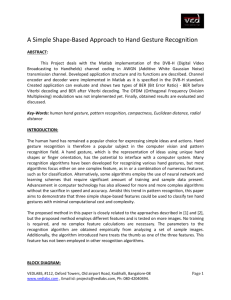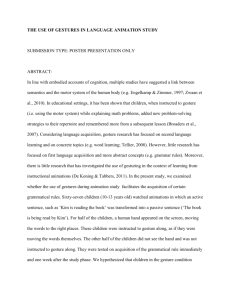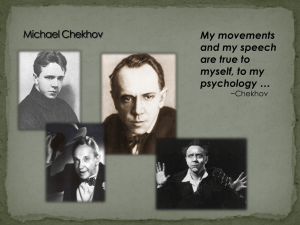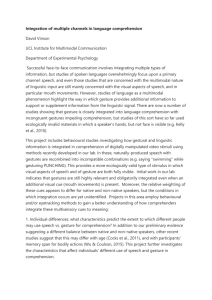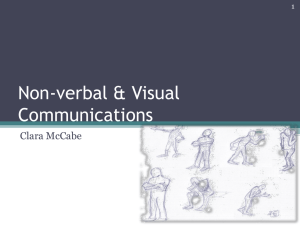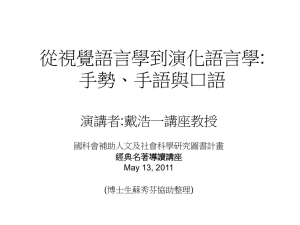Interactive metonymy - co-constructing meaning and reference
advertisement
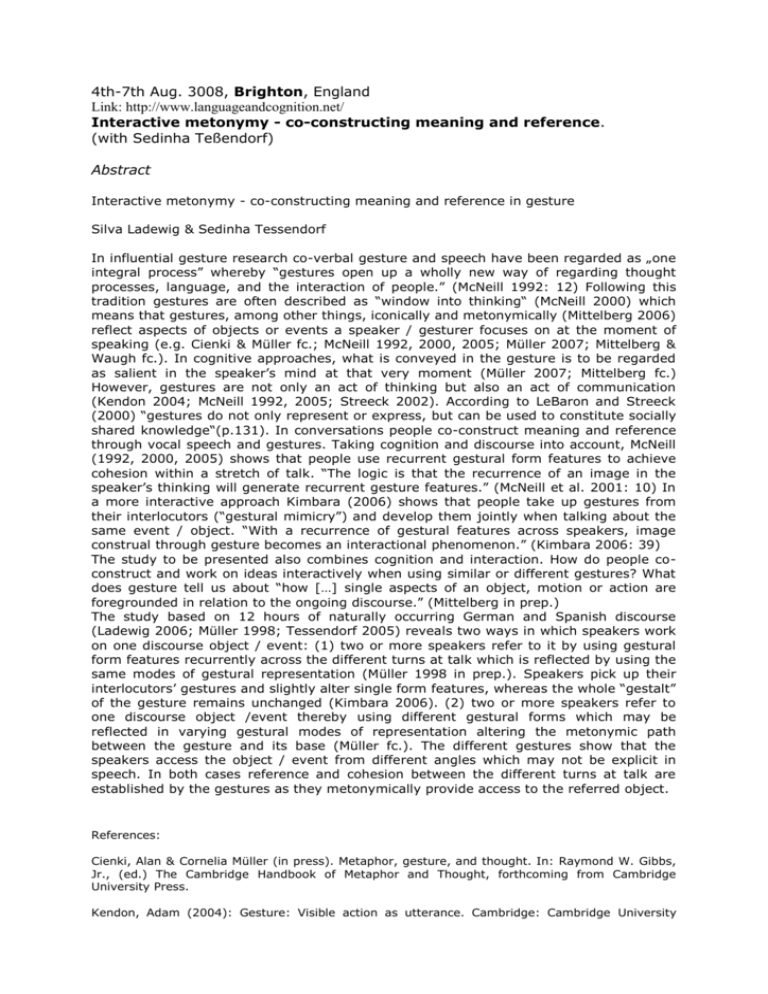
4th-7th Aug. 3008, Brighton, England Link: http://www.languageandcognition.net/ Interactive metonymy - co-constructing meaning and reference. (with Sedinha Teßendorf) Abstract Interactive metonymy - co-constructing meaning and reference in gesture Silva Ladewig & Sedinha Tessendorf In influential gesture research co-verbal gesture and speech have been regarded as „one integral process” whereby “gestures open up a wholly new way of regarding thought processes, language, and the interaction of people.” (McNeill 1992: 12) Following this tradition gestures are often described as “window into thinking“ (McNeill 2000) which means that gestures, among other things, iconically and metonymically (Mittelberg 2006) reflect aspects of objects or events a speaker / gesturer focuses on at the moment of speaking (e.g. Cienki & Müller fc.; McNeill 1992, 2000, 2005; Müller 2007; Mittelberg & Waugh fc.). In cognitive approaches, what is conveyed in the gesture is to be regarded as salient in the speaker’s mind at that very moment (Müller 2007; Mittelberg fc.) However, gestures are not only an act of thinking but also an act of communication (Kendon 2004; McNeill 1992, 2005; Streeck 2002). According to LeBaron and Streeck (2000) “gestures do not only represent or express, but can be used to constitute socially shared knowledge“(p.131). In conversations people co-construct meaning and reference through vocal speech and gestures. Taking cognition and discourse into account, McNeill (1992, 2000, 2005) shows that people use recurrent gestural form features to achieve cohesion within a stretch of talk. “The logic is that the recurrence of an image in the speaker’s thinking will generate recurrent gesture features.” (McNeill et al. 2001: 10) In a more interactive approach Kimbara (2006) shows that people take up gestures from their interlocutors (“gestural mimicry”) and develop them jointly when talking about the same event / object. “With a recurrence of gestural features across speakers, image construal through gesture becomes an interactional phenomenon.” (Kimbara 2006: 39) The study to be presented also combines cognition and interaction. How do people coconstruct and work on ideas interactively when using similar or different gestures? What does gesture tell us about “how […] single aspects of an object, motion or action are foregrounded in relation to the ongoing discourse.” (Mittelberg in prep.) The study based on 12 hours of naturally occurring German and Spanish discourse (Ladewig 2006; Müller 1998; Tessendorf 2005) reveals two ways in which speakers work on one discourse object / event: (1) two or more speakers refer to it by using gestural form features recurrently across the different turns at talk which is reflected by using the same modes of gestural representation (Müller 1998 in prep.). Speakers pick up their interlocutors’ gestures and slightly alter single form features, whereas the whole “gestalt” of the gesture remains unchanged (Kimbara 2006). (2) two or more speakers refer to one discourse object /event thereby using different gestural forms which may be reflected in varying gestural modes of representation altering the metonymic path between the gesture and its base (Müller fc.). The different gestures show that the speakers access the object / event from different angles which may not be explicit in speech. In both cases reference and cohesion between the different turns at talk are established by the gestures as they metonymically provide access to the referred object. References: Cienki, Alan & Cornelia Müller (in press). Metaphor, gesture, and thought. In: Raymond W. Gibbs, Jr., (ed.) The Cambridge Handbook of Metaphor and Thought, forthcoming from Cambridge University Press. Kendon, Adam (2004): Gesture: Visible action as utterance. Cambridge: Cambridge University Press. Kimbara, Irene (2006) On gestural mimicry. In: Gesture 6:1, 39-61. Ladewig, Silva (2006) Die Kurbelgeste – konventionalisierte Markierung eine kommunikativen Aktivität. Unpublished Master Thesis, Free University Berlin. LeBaron, Curtis & Jürgen Streeck (2000). Gestures, knowledge, and the world. In: David McNeill (ed.) Language and gesture: Window into thought and action. Cambridge: Cambridge University Press, 118-138. McNeill, David (1992). Hand and mind: What gesture reveals about thought. Chicago: Chicago University Press. McNeill, David (2005). Gesture and Thought. Chicago: Chicago University Press. McNeill, David & Susan Duncan (2000). Growth points in thinking-for-speaking. In: David McNeill (ed.) Language and gesture: Window into thought and action. Cambridge: Cambridge University Press, 141-161. McNeill, David, Francis Quek, Karl-Erik McCullough, Susan Duncan, Nobuhiro Furuyama, Robert Bryll, Xin-Feng Maand Rashid Ansari (2001) Catchments, prosody and discourse. Gesture 1:1, 933. Mittelberg, Irene (2006). Metaphor and metonymy in language and gesture: Discourse evidence for multimodal models of grammar. Ph.D. Dissertation, Cornell University. Mittelberg, Irene (in prep.) Internal and external metonymy in co-verbal gesture: Jakobsonian and cognitivist views on contiguity relations within and across modalities. Mittelberg, Irene & Linda R. Waugh (in prep.). Multimodal figures of thought: A cognitive-semiotic approach to metaphor and metonymy in co-speech gesture. In: Forceville, Charles & Eduardo Urios-Aparisi (eds.) Multimodal Metaphor. Berlin/New York: Mouton de Gruyter Müller, Cornelia (1998)Redebegeitende Gesten. Kulturgeschichte - Theorie – Sprachvergleich. Berlin: Berlin Verlag A. Spitz. Müller, Cornelia (in press) Metaphors, Dead and Alive, Sleeping and Waking: A Cognitive Approach to Metaphors in Language Use. Chicago: Chicago University Press. Müller, Cornelia (2007) A dynamic view on gesture, language and thought. In: Susan Duncan et al. (eds.) Gesture and the dynamic dimension of language. Essays in honor of David McNeill. Amsterdam/Philadelphia: John Benjamins, 109-116. Müller, Cornelia (to appear) Modes of Representation as Iconic Devices in Gestures and Signs. To appear in Gesture 8:1, 2008. Streeck, Jürgen (2002) A body and its gestures. Gesture 2:2, 19-44. Teßendorf, Sedinha (2005) Pragmatische Funktionen spanischer Gesten am Beispiel des “gesto de barrer”. Unpublished Master Thesis, Free University Berlin.




